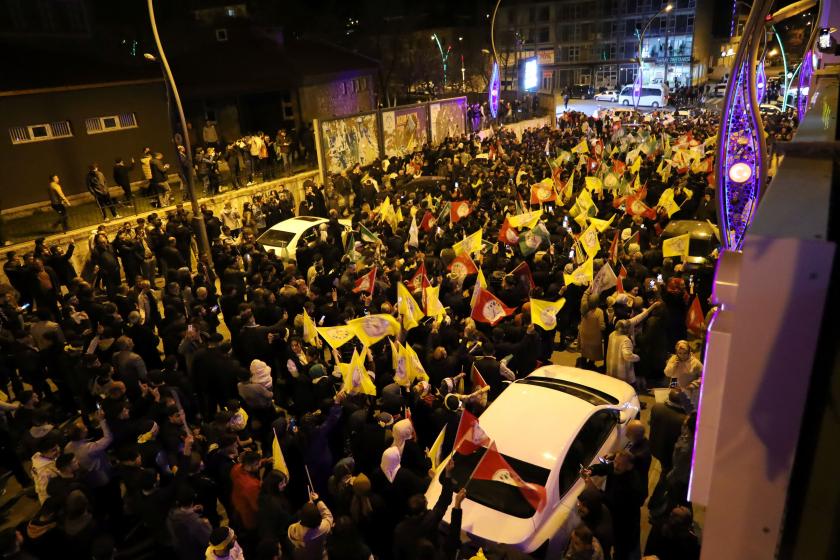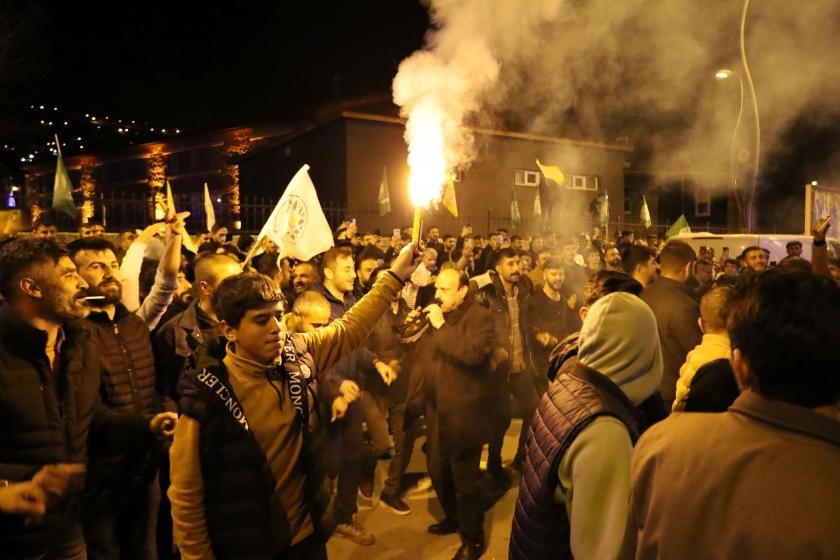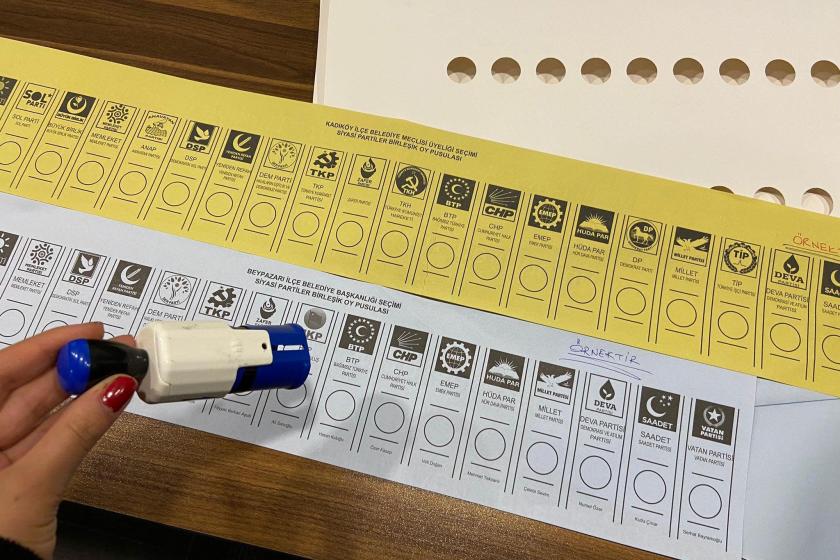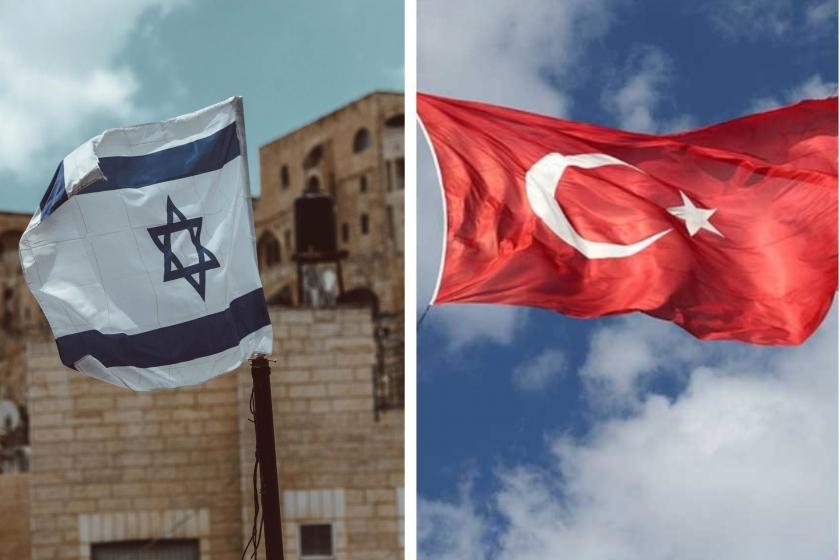Mithat Fabian SÖZMEN
It’s been a year since the Euphrates Shield operation. The operation started on 24 August 2016 when Jarabulus was taken away from ISIS and officially ended on 29 March 2017 when Al-Bab was taken over. However Turkey’s presence in the region continues. There has been no new operation announced, but in reality the Euphrates Shield process continues.
The operation has ended the presence of ISIS on the Turkey-Syria border. This has helped the Turkish Armed Forces and the jihadists to gain control of the area and prevented the Kurds from uniting their cantons. Following the official completion of the operation, president Erdoğan has spoken of new adventures and targeted Syrian Democratic Forces. In the last few days Afrin and Idlib are at the forefront of this plan. A year after the Euphrates Shield, we will assess the reality by answering five questions about this operation.
Newspapers headlines:
Sabah: No returning until we succeed.
Hurriyet: Jarabulus in 14 hours.
Sozcu: Soldiers in Syria.
Yeni Safak: This is just the beginning.
Karar: Cleaning up ISIS, a message to the PYD.
Star: Euphrates shield for the terror corridor.
Aksam: double cleaning with the national forces.
Aydinlik: Turkish sword for the corridor.
Turkey’s first direct military intervention on Syrian soil began one year ago accompanied by the newspaper headlines above. The operation, which began near dawn with artillery fire and a military air bombardment, continued with a land assault. The jihadists under the name of the ‘Free Syrian Army’ who made up the foot soldiers in the operation, were supported by Turkish Armed Force tanks. Jarabulus was taken from ISIS within 14 hours. ISIS had withdrawn from the area without putting up any resistance because its headquarters in the area, Al-Bab, was already under pressure (indirectly geographically) from the Syrian Democratic Forces in the west and the Syrian Army in the east. The ISIS forces had focused on fighting the Turkish supported jihadist groups in order to gain control of Al-Rai East of Al-Bab. The logistics in the area were being fed by the Raqqa – Meskanah – El Bab axis. They were under constant threat of bombardment by America, Russian and Syrian planes. In other words, there was no way for ISIS to defend itself on Jarabulus’ flat geography and so they withdrew quickly.
Why have we paid so much attention to this? The cycle that led to ISIS fleeing was important because it showed that the crowd of actors in the region (Syrian Democratic Forces, the USA, Russia, Syrian Army and jihadist groups) and the presence of ISIS west of the Euphrates would soon be coming to an end.
Of course, ISIS is a good excuse for external powers that have wanted to intervene in Syria for a while. And Turkey – in accordance with political logic on Syria – had to act before ISIS disappeared from the Turkish border. This is because the Syrian Democratic Forces were progressing and it was inevitable that they would gain Jarabulus after Manbij, and that this would continue. If Turkey had not taken this step the Syrian Democratic Forces might have taken control of the area and it might have become impossible to intervene in Syria without waging war against, not just the Kurds, but also America and Russia.
If we recall the newspaper headlines ‘double cleaning with the national forces’ or ‘Turkish sword for the corridor’, it is evident that the aim was for Turkey to have a say in the division of Syria and also prevent the Kurds from gaining further ground.
The operation which began on 24 August initially only resulted in intermittent battles with the Syrian Democratic Forces near Jarabulus – not with ISIS. During this time leading AKP figures frequently renewed calls for the Syrian Democratic Forces to withdraw from Manbij. The landmines laid by ISIS in the area and the conflict with the Syrian Democratic Forces slowed down progress ahead of Al-Bab.
Firstly, Turkey had to take control of Al-Rai. And so on 3 September the Turkish Armed Forces Tanks entered Al-Rai from the border and one element of the operation was continued from here.
During this same period the Syrian Democratic Forces declared that they had launched an operation in Al-Bab, however this was destined to be weak because of the pressure from the Euphrates Shield. Every time the Syrian Democratic forces tried to make progress bombardments by the Turkish armed forces prevented them.
With the reduced pressure from ISIS in and around Al-Rai, the Dabik operation was launched on 20 September. This was significant in terms of the Dabik being one of the symbolic headquarters for ISIS and for the provision of logistics to Al-Bab.
This was a difficult period in which ISIS provided strong resistance and the military skills of the jihadist forces under the direction of the Turkish Armed Forces were called into question. Ultimately, the operation on Al-Bab was put on hold until 6 November but it proved even more difficult thereafter.
By the time the Al-Bab operation came to end on 23 February, 59 members of the Turkish Armed Forces and more than 500 Free Syrian Army fighters lost their lives.
That the operation was halted early was significant because this would determine the amount of control Turkey would ultimately gain in Syria.
Euphrates Shield Forces: We have taken control of central Al-Bab.
By the time the Al-Bab battle (which was strongly influenced by the dynamics of the war in Aleppo) came to an end, the Syrian Army had gained control of the area south of Tadef to the edge of the Euphrates and Al-Khafsah (bordering with the Syrian Democratic Forces). This prevented the Euphrates Shield from progressing further South.
The Syrian Army’s Plan to prevent the Euphrates Shield
After prolonged conflict, ISIS agreed to withdraw south from Al-Bab and waited for its battle with the Syrian Army.
Turkey which by this point shared no border with ISIS and thus had no further space for movement, declared that its new targets would be Manbij (East of Al-Bab) and Tall Rifat (West of Al-Bab) both under the control of the Syrian Democratic Forces.
After Al-Bab until the Euphrates Shield operation was declared over on 29 March, Turkey attempted to take military action against Manbij and Tall Rifat. However, these attempts were thwarted by the coordinated effort of America, Russia and Syria. In order to prevent the progress of the Euphrates Shield to Manbij, an agreement was reached with Russia allowing for the control of the villages on the border of Arima to be given to the Syrian Army.
By the time the Euphrates Shield was declared over, ISIS was completely eradicated from the Turkish-Syrian border but also, in the words of Syrian President Bashar Esad, 2,000 km of Syrian land had become occupied by Turkey and the jihadists under their control.
The Syrian Democratic Forces aim of joining the cantons in Northern Syria was prevented and Ankara had partially achieved the “safe area” that it had desired since the beginning of the Syrian war.
Moreover, the jihadists supported by Turkey, who had previously lost on all fronts from Latakiya to Aleppo and had reduced Turkey’s prestige significantly, now found a new way to secure influence again by using the Ankara – Syria situation. All of this contained important steps backwards by Turkey in relation to Syrian politics and they had eaten all of their previous words, yet in the end they still sat at the Astana negotiation table with Russia and Iran.
The area map after the end of the Aleppo war (21 December 2016)
Euphrates Shield’s most important influence was the Aleppo front. Syria, Russia, Iran, the YPG in the district of Seyh Maksud and the Fatah Army supported by Turkey (during this period Nusra changed its name to Fateh al-Sham, Ahrar al-Sham and other jihadists) came face to face as part of the operation within the centre of Aleppo city. This was vitally important in terms of the future of Syria war. To put an end to the jihadist domination on the Aleppo front, known as the “mother of all wars” for many years, meant shaping the fate of the war across the whole nation.
Since the start of the war, the government sought ways to topple the regime through foreign intervention, boots on the ground, and supporting jihadist groups but saw the defeats of the groups it supported mainly in Aleppo and Latakia following changes in the circumstances which Russia helped to shape.
The sour relationship with the USA was reaffirmed when the obvious link between CIA and the coup attempt on 15 July created a new ground of agreement with Russia. Moscow had a strong hand but as one of the strongest nations of the two countries in the region, Turkey could potentially use its large army and its influence over the jihadist groups to strengthen its hand on the negotiating table. Under these conditions Ankara made an agreement with Moscow and agreed that the Euphrates Shield operations with some limitations would continue in return for Turkey withdrawing those jihadist groups it has influence over in Aleppo. These groups had taken part in the Euphrates Shield operation which meant that the Aleppo front weakened and the alliances within the Fatah Army showed clear fault lines.
The Syrian army and its allies removed the jihadist groups within the centre of Aleppo city on 22 December 2016. As a result, AKP stayed silent on the western propaganda on the massacre in Aleppo. At times this resulted in issues resurfacing.
The events that took place in Aleppo resulted in Al-Qaida in Syria forming Tahrir al-sham. This signaled a clear break between Nusra and Ahrar al-Sham and was completed with the military success of Al-Qaida removing Ahrar el-Sham from the Turkey boarder and Idlib city.
Let’s remember the headlines of the pro-government media. The news headlines were as follows:
Yeni Safak: “This is just the beginning”
Sabah: “No returning until we succeed”
As always President Erdoğan did not rule out new operations following the end of the Euphrates Shield.
From Erdoğan’s words saying “we will broaden the dagger” and the discussion within the media on the next steps, it appears that Afrin is Turkey’s first target. Without any interruption and for long periods the attack on Tell Rifaat, a city which PYD gained control of later on, continues. However Turkey’s Afrin ambition is not supported by any of the powers in the region such as USA, Russia, Iran and Aleppo (Syrian Government). Bashar Assad’s recent comments made this clear by defining Turkey as an occupying force.
Others forces are closely aware of Ankara’s maneuvering skills since the start of Syria war, which makes Erdoğan an unreliable partner. SDF’s old balanced relationship with USA and Russia has now tilted towards USA and could have made Alleppo think twice, but the doubts are not big enough to work with Ankara.
Even though there have been many claims that there is military collaboration between Iran and Turkey, there is small possibility for this to include Afrin.
And finally Afrin will resist, which will resurge the Kurdish opposition within the country and knowing USA’s attitude towards this campaign it further reduces the possibility of this adventure (of attacking Afrin).
What about Idlib?
With the support of Turkey, Idlib was captured by jihadists. al-Qaeda took over control of the border and town centre. This took Idlib out of the “conflict free zone”. An Idlib operation had been on the table for Syria, Russia and Iran for a long time but the priority had been Deir ez-Zur where the competition was with the USA.
Taking back control of Idlib will require significant military power and in recent days suggestions have been made (primarily by the newspaper Aydinlik and other circles) that “Turkey should start at the North and Syria with its allies should progress from the South”. These suggestions have little basis in reality. Firstly, if Turkey were to take this course of action it would find itself in a serious war. The Turkish forces would also have to shoot at their old allies and the direct alliance it forges with the Syrian regime would lead to problems with the participant groups in the Euphrates Shield operation and the Al-Rai Al-Bab Jarabulus towns that are controlled by those groups.
In short, Turkey wants to extend the situation the Euphrates Shield has created in Northern Syria (and it can do this by maintaining its current position) but doing this through extensive military intervention in critical locations like Afrin and Idlib would only be possible through a change in the political climate. And this is not possible in the short term. America and Russia – for the time being – are in favour of continuing their war for dominance in Syria without coming into direct military conflict with each other. Until this changes, the status quo in Idlib and Afrin will not change.



